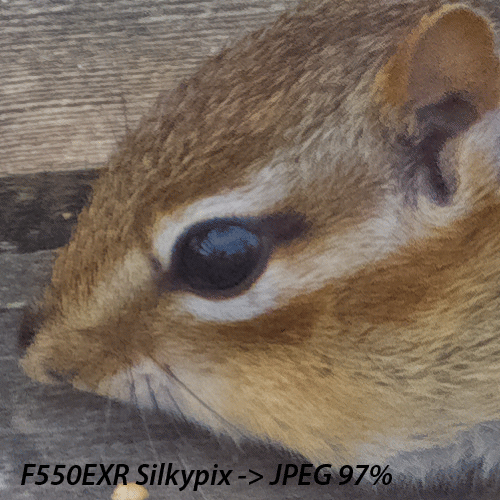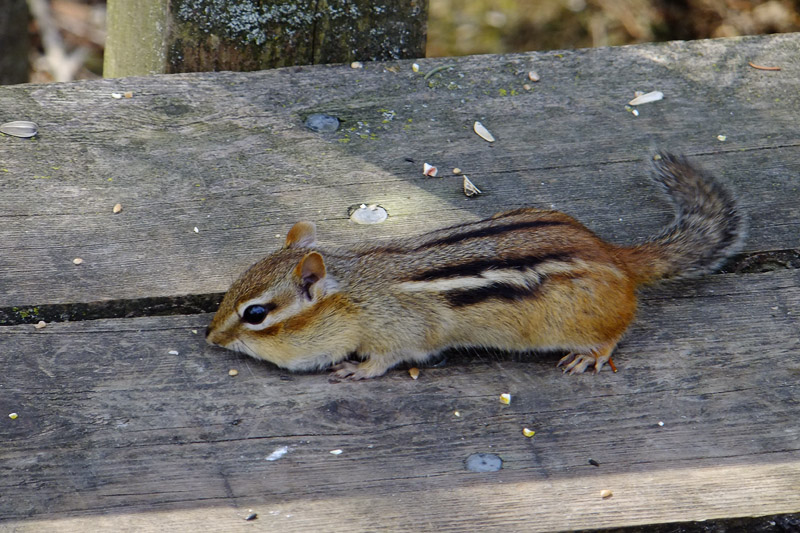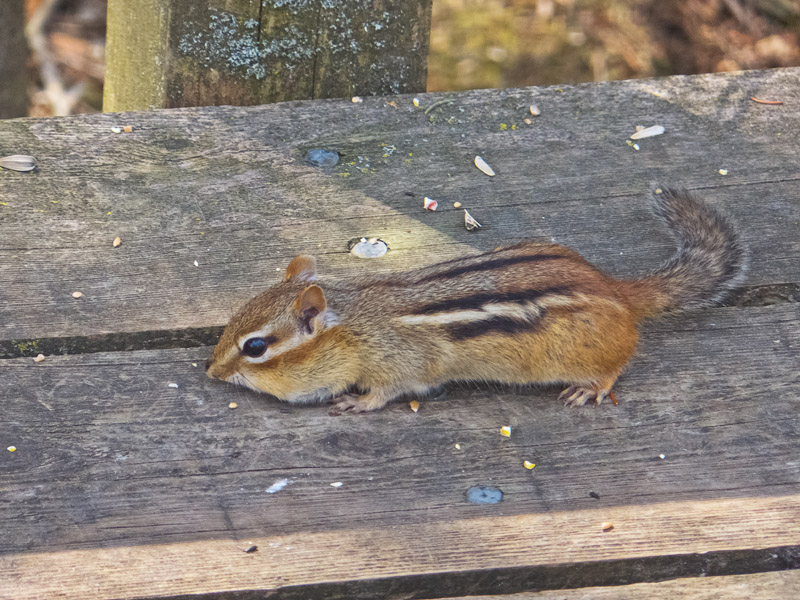JPEG format is compressed. And not just a little, in fact quite a bit. The 8mp images that are written by my standard settings write out 3 bytes per pixel and a header, so something over 24MB worth of image data.
Yet when I save from Silkypix, I get images that range from 3MB to 6MB in in JPEG format. And that’s at 97% quality. This is, of course, 8:1 compression (24 / 3 = 8) … and so is fairly moderate. Although the web site has disappeared by now, I once read that 10:1 compression was considered invisible to sharpening algorithms, which can be taken to mean that generated compression artifacts are pretty much invisible to the computer. And you can take that to mean that the human eye has no chance whatsoever to see these artifacts either, no matter how high the magnification.
Yet I suspect that some will wonder if saving to TIFF, an uncompressed format, can improve the quality of the transfer from Silkypix to Photoshop. After all, the JPEG is removing approximately 7/8 of the data so how can that compete?
Well, that’s the beauty of the JPEG compression algorithms … they really, really work. And, this sensor is really tiny with a lot of data on it and some weird binning algorithms and some noise reduction smoothing that is mandatory even at base ISO. So all this conspires to lower the effective resolution, as it does on *every* sensor to a larger or smaller extent.
The only defense is sensor size.
So … let’s cut to the chase: there is no reason whatsoever to save to TIFF format from Silkypix with this sensor. I cannot see any difference at all.
From original JPEG
From RAF
This is a case where the original jpeg carries enough data to satisfy almost anyone. But for larger prints, there is a level of subtlety that can only be achieved in the RAF conversion process …



No comments:
Post a Comment